Overseas Chinese
Chinese diaspora (Archaic. traditional Chinese: 海外華人; simplified Chinese: 海外华人; pinyin: Hǎiwài Huárén) are people of Chinese birth or descent who live outside the People's Republic of China (the Mainland, Hong Kong, Macau) or Republic of China (Taiwan). They can be of the Han Chinese ethnic majority, or from any of the other ethnic groups in China.[27]
Terminology
Huáqiáo (simplified Chinese: 华侨; traditional Chinese: 華僑; pinyin: Huáqiáo) or Hoan-kheh in Hokkien (Chinese: 番客), refers to people of Chinese citizenship residing outside of China. At the end of the 19th century, the Chinese government realized that the overseas Chinese could be an asset, a source of foreign investment, and a bridge to overseas knowledge; thus, it began to recognize the use of the term Huaqiao.[28] The modern term haigui (simplified Chinese: 海归; traditional Chinese: 海歸) refers to returned overseas Chinese and guīqiáo qiáojuàn (simplified Chinese: 归侨侨眷; traditional Chinese: 歸僑僑眷) to their returning relatives.[27]
Huáyì (simplified Chinese: 华裔; traditional Chinese: 華裔; Pe̍h-ōe-jī: Hôa-è) refers to people of Chinese descent residing outside of China, regardless of citizenship.[29] Another often-used term is 海外華人 (Hǎiwài Huárén), a more literal translation of Chinese diaspora; it is often used by the PRC government to refer to people of Chinese ethnicities who live outside the PRC, regardless of citizenship.
Chinese dispora who are ethnically Han Chinese, such as Cantonese, Hoochew, Hokkien, Hakka, or Teochew refer to themselves as 唐人 (Tángrén), pronounced tòhng yàn in Cantonese, toung ning in Hoochew, Tn̂g-lâng in Hokkien, and tong nyin in Hakka. Literally, it means Tang people, a reference to Tang dynasty China when it was ruling China proper. This term is commonly used by the Cantonese, Hoochew, Hakka and Hokkien as a colloquial reference to the Chinese people, and has little relevance to the ancient dynasty.
The term shǎoshù mínzú (simplified Chinese: 少数民族; traditional Chinese: 少數民族) is added to the various terms for the Chinese Dispora to indicate those in the diaspora who would be considered ethnic minorities in China. The terms shǎoshù mínzú huáqiáo huárén; shǎoshù mínzú huáqiáo huárén; and shǎoshù mínzú hǎiwài qiáobāo (simplified Chinese: 少数民族海外侨胞; traditional Chinese: 少數民族海外僑胞) are all in usage. The Overseas Chinese Affairs Office of the PRC does not distinguish between Han and ethnic minority populations for official policy purposes.[27] For example, members of the Tibetan diaspora may travel to China on passes granted to certain people of Chinese descent.[30] Various estimates of the Chinese diaspora minority population include 3.1 million (1993),[31] 3.4 million (2004),[32] 5.7 million (2001, 2010),[33][34] or approximately one tenth of all Chinese diaspora (2006, 2011).[35][36] Cross-border ethnic groups (跨境民族, kuàjìng mínzú) are not considered Chinese diaspora minorities unless they left China after the establishment of an independent state on China's border.[27]
Some ethnic groups who have historic connections with China, like the Hmong may not associate themselves as part of the Chinese diaspora.[37]
History
The Chinese people have a long history of migrating overseas. One of the migrations dates back to the Ming dynasty when Zheng He (1371–1435) became the envoy of Ming. He sent people – many of them Cantonese and Hokkien – to explore and trade in the South China Sea and in the Indian Ocean.
Qing Dynasty and Republic of China
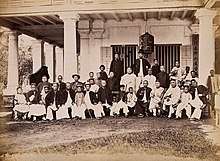
When China was under the imperial rule of the Qing Dynasty, subjects who left the Qing Empire without the Administrator's consent were considered to be traitors and were executed. Their family members faced consequences as well. However, the establishment of the Lanfang Republic (Chinese: 蘭芳共和國; pinyin: Lánfāng Gònghéguó) in West Kalimantan, Indonesia, as a tributary state of Qing China, attests that it was possible to attain permission. The republic lasted until 1884, when it fell under Dutch occupation as Qing influence waned.
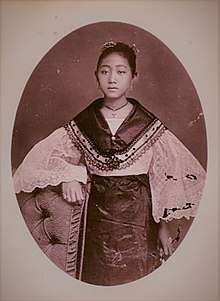
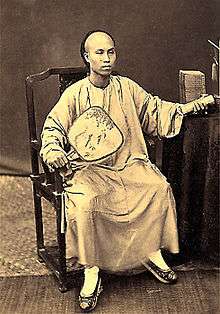
Under the administration of the Republic of China from 1911 to 1949, these rules were abolished and many migrated outside the Republic of China, mostly through the coastal regions via the ports of Fujian, Guangdong, Hainan and Shanghai. These migrations are considered to be among the largest in China's history. Many nationals of the Republic of China fled and settled down in South East Asia mainly between the years 1911–1949, after the Nationalist government led by Kuomintang lost to the Communist Party of China in the Chinese Civil War in 1949. Most of the nationalist and neutral refugees fled Mainland China to Southeast Asia (Singapore, Brunei, Thailand, Malaysia, Indonesia and Philippines) as well as Taiwan (Republic of China). Many nationalists who stayed behind were persecuted or even executed.[38][39]
Most of the Chinese who fled during 1911–1949 under the Republic of China settled down in Singapore and Malaysia and automatically gained citizenship in 1957 and 1963 as these countries gained independence.[40][41] Kuomintang members who settled in Malaysia and Singapore played a major role in the establishment of the Malaysian Chinese Association and their meeting hall at Sun Yat Sen Villa. There is some evidence that they intend to reclaim mainland China from the Communists by funding the Kuomintang in China.[42][43]
During the 1950s and 1960s, the ROC tended to seek the support of overseas Chinese communities through branches of the Kuomintang based on Sun Yat-sen's use of expatriate Chinese communities to raise money for his revolution. During this period, the People's Republic of China tended to view overseas Chinese with suspicion as possible capitalist infiltrators and tended to value relationships with Southeast Asian nations as more important than gaining support of overseas Chinese, and in the Bandung declaration explicitly stated that overseas Chinese owed primary loyalty to their home nation.
Waves of immigration
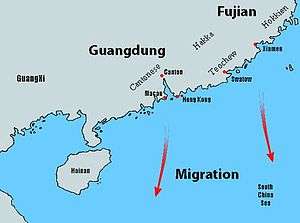
Different waves of immigration led to subgroups among overseas Chinese such as the new and old immigrants in Southeast Asia, North America, Oceania, the Caribbean, South America, South Africa, and Europe. In the 19th century, the age of colonialism was at its height and the great Chinese diaspora began. Many colonies lacked a large pool of laborers. Meanwhile, in the provinces of Fujian and Guangdong in China, there was a surge in emigration as a result of the poverty and ruin caused by the Taiping rebellion.[44] The Qing Empire was forced to allow its subjects to work overseas under colonial powers. Many Hokkien chose to work in Southeast Asia (where they had earlier links starting from the Ming era), as did the Cantonese. The city of Taishan in Guangdong province was the source for many of the economic migrants. For the countries in North America and Australasia, great numbers of laborers were needed in the dangerous tasks of gold mining and railway construction. Widespread famine in Guangdong impelled many Cantonese to work in these countries to improve the living conditions of their relatives. Some overseas Chinese were sold to South America during the Punti-Hakka Clan Wars (1855–1867) in the Pearl River Delta in Guangdong. After World War II many people from the New Territories in Hong Kong emigrated to the UK (mainly England) and to the Netherlands to earn a better living.
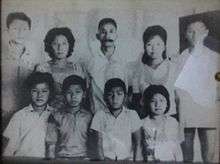
From the mid-19th century onward, emigration has been directed primarily to Western countries such as the United States, Australia, Canada, Brazil, The United Kingdom, New Zealand, Argentina and the nations of Western Europe; as well as to Peru, Panama, and to a lesser extent to Mexico. Many of these emigrants who entered Western countries were themselves overseas Chinese, particularly from the 1950s to the 1980s, a period during which the PRC placed severe restrictions on the movement of its citizens. In 1984, Britain agreed to transfer the sovereignty of Hong Kong to the PRC; this triggered another wave of migration to the United Kingdom (mainly England), Australia, Canada, US, South America, Europe and other parts of the world. The Tiananmen Square protests of 1989 further accelerated the migration. The wave calmed after Hong Kong's transfer of sovereignty in 1997. In addition, many citizens of Hong Kong hold citizenships or have current visas in other countries so if the need arises, they can leave Hong Kong at short notice. In fact, after the Tiananmen Square incident, the lines for immigration visas increased at every consulate in Hong Kong.
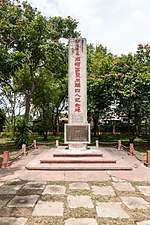
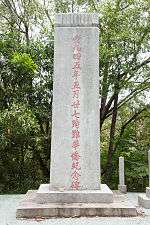
In recent years, the People's Republic of China has built increasingly stronger ties with African nations. Author Howard French estimates that over one million Chinese have moved in the past 20 years to Africa.[45]
More recent Chinese presences have developed in Europe, where they number nearly a million, and in Russia, they number over 200,000, concentrated in the Russian Far East. Russia’s main Pacific port and naval base of Vladivostok, once closed to foreigners and belonged to China until the late 19th century, as of 2010 bristles with Chinese markets, restaurants and trade houses. A growing Chinese community in Germany consists of around 76,000 people as of 2010.[46] An estimated 15,000 to 30,000 Chinese live in Austria.[47]
Chinese diaspora experience
Commercial success
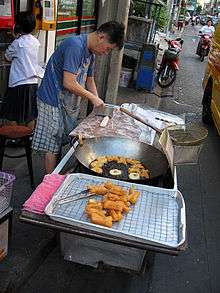
Chinese diaspora are estimated to control US$ 2 trillion in liquid assets and have considerable amounts of wealth to stimulate economic power in China.[48][49] The Chinese business community of Southeast Asia, known as the bamboo network, has a prominent role in the region's private sectors.[50][51]
In North America, Europe, and Oceania, occupations are diverse and impossible to generalize; ranging from catering to significant ranks in medicine, the arts, and academia.
Chinese diaspora often send remittances back home to family members to help better them financially and socioeconomically. China ranks second after India of top remittance-receiving countries in 2010 with over US$51 billion sent.[52]
Assimilation
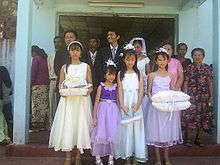
Chinese diaspora vary widely as to their degree of assimilation, their interactions with the surrounding communities (see Chinatown), and their relationship with China.
Thailand has the largest overseas Chinese community and is also the most successful case of assimilation, with many claiming Thai identity. For over 400 years, Thai-Chinese have largely intermarried and/or assimilated with their compatriots. The present Thai monarch, Chakri Dynasty, is founded by King Rama I who himself is partly Chinese. His predecessor, King Taksin of the Thonburi Kingdom, is the son of a Chinese immigrant from Guangdong Province and was born with a Chinese name. His mother, Lady Nok-iang (Thai: นกเอี้ยง), was Thai (and was later awarded the feudal title of Somdet Krom Phra Phithak Thephamat).
In the Philippines, Chinese from Guangdong were already migrating to the islands from the 9th century, and have largely intermarried with either indigenous Filipinos or Spanish colonisers. Their descendants would eventually form the bulk of the elite and ruling classes in a sovereign Philippines. Since the 1860s, most Chinese immigrants have come from Fujian; unlike earlier migrants, Fujianese settlers rarely intermarried, and thus form the bulk of the "unmixed" Chinese Filipinos. Older generations have retained Chinese traditions and the use of Minnan (Hokkien), while the majority of younger generations largely communicate in English, Filipino, and other Philippine languages, and have largely layered facets of both Western and Filipino culture onto their Chinese cultural background.
In Myanmar, the Chinese rarely intermarry (even amongst different Chinese linguistic groups), but have largely adopted the Burmese culture whilst maintaining Chinese cultural affinities. In Cambodia, between 1965 and 1993, people with Chinese names were prevented from finding governmental employment, leading to a large number of people changing their names to a local, Cambodian name. Indonesia, and Myanmar were among the countries that do not allow birth names to be registered in foreign languages, including Chinese. But since 2003, the Indonesian government has allowed ethnic Chinese people to use their Chinese name or using their Chinese family name on their birth certificate.
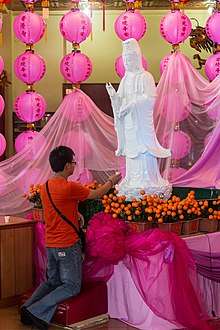
In Vietnam, Chinese names are pronounced with Sino-Vietnamese readings. For example, the name of the previous Chinese president, 胡錦濤 (pinyin: Hú Jǐntāo), would be transcribed as "Hồ Cẩm Đào". In Western countries, the overseas Chinese generally use romanised versions of their Chinese names, and the use of local first names is also common. Vietnamese people have adopted some Chinese traditions, ancient Chinese characters, philosophy such as Confucianism, Taoism after centuries of the rule of China[53] until the establishment of Ngo dynasty (Han-Nom: 吳朝); some Hoa people adopt the Vietnamese culture due to their similarities, however many Hoa still prefer maintaining Chinese cultural background (See Sinic world or Adoption of Chinese literary culture). The official census from 2009 accounted the Hoa population at some 823,000 individuals and ranked 6th in terms of its population size. 70% of the Hoa live in cities and towns, mostly in Ho Chi Minh city while the remainder live in the countryside in the southern provinces.[17]
On the other hand, in Malaysia, Singapore, and Brunei, the ethnic Chinese have maintained a distinct communal identity.
In East Timor, a large fraction of Chinese are of Hakka descent.
Discrimination
Chinese diaspora have often experienced hostility and discrimination.
In countries with small ethnic Chinese minorities, the economic disparity can be remarkable. For example, in 1998, ethnic Chinese made up just 1% of the population of the Philippines and 4% of the population in Indonesia, but have wide influence in Philippines and Indonesian private economy.[54] The book World on Fire, describing the Chinese as a "market-dominant minority", notes that "Chinese market dominance and intense resentment amongst the indigenous majority is characteristic of virtually every country in Southeast Asia except Thailand and Singapore".[55] Chinese market dominance is present in Thailand, which is noted for its lack of resentment, while Singapore is majority ethnic Chinese.
This asymmetrical economic position has incited anti-Chinese sentiment among the poorer majorities. Sometimes the anti-Chinese attitudes turn violent, such as the 13 May Incident in Malaysia in 1969 and the Jakarta riots of May 1998 in Indonesia, in which more than 2,000 people died, mostly rioters burned to death in a shopping mall.[56] During the colonial era, some genocides killed tens of thousands of Chinese.[57][58][59][60][61]
During the Indonesian killings of 1965–66, in which more than 500,000 people died,[62] ethnic Chinese were killed and their properties looted and burned as a result of anti-Chinese racism on the excuse that Dipa "Amat" Aidit had brought the PKI closer to China.[63][64] The anti-Chinese legislation was in the Indonesian constitution until 1998.
It is commonly held that a major point of friction is the apparent tendency of overseas Chinese to segregate themselves into a subculture. For example, the anti-Chinese Kuala Lumpur Racial Riots of 13 May 1969 and Jakarta Riots of May 1998 were believed to have been motivated by these racially biased perceptions.[65] This analysis has been questioned by some historians, most notably Dr. Kua Kia Soong, the principal of New Era College, who has put forward the controversial argument that the 13 May Incident was a pre-meditated attempt by sections of the ruling Malay elite to incite racial hostility in preparation for a coup.[66] In 2006, rioters damaged shops owned by Chinese-Tongans in Nukuʻalofa.[67] Chinese migrants were evacuated from the riot-torn Solomon Islands.[68]
Ethnic politics can be found to motivate both sides of the debate. In Malaysia, ethnic Chinese tend to support equal and meritocratic treatment on the expectation that they would not be discriminated against in the resulting competition for government contracts, university places, etc., whereas many "Bumiputra" ("native sons") Malays oppose this on the grounds that their group needs such protections in order to retain their patrimony. The question of to what extent ethnic Malays, Chinese, or others are "native" to Malaysia is a sensitive political one. It is currently a taboo for Chinese politicians to raise the issue of Bumiputra protections in parliament, as this would be deemed ethnic incitement.[69]
Many of the Chinese diaspora who worked on railways in North America in the 19th century suffered from racial discrimination in Canada and the United States. Although discriminatory laws have been repealed or are no longer enforced today, both countries had at one time introduced statutes that barred Chinese from entering the country, for example the United States Chinese Exclusion Act of 1882 (repealed 1943) or the Canadian Chinese Immigration Act, 1923 (repealed 1947).
In Australia, Chinese were targeted by a system of discriminatory laws known as the 'White Australia Policy' which was enshrined in the Immigration Restriction Act of 1901. The policy was formally abolished in 1973, and in recent years Australians of Chinese background have publicly called for an apology from the Australian Federal Government[70] similar to that given to the 'stolen generations' of indigenous people in 2007 by the then Prime Minister Kevin Rudd.
Relationship with China
Both the People's Republic of China and Taiwan (officially known as the Republic of China) maintain high level relationships with the Chinese diaspora populations. Both maintain cabinet level ministries to deal with overseas Chinese affairs, and many local governments within the PRC have overseas Chinese bureaus.
Citizenship status
The Nationality Law of the People's Republic of China, which does not recognise dual citizenship, provides for automatic loss of PRC citizenship when a former PRC citizen both settles in another country and acquires foreign citizenship. For children born overseas of a PRC citizen, whether the child receives PRC citizenship at birth depends on whether the PRC parent has settled overseas: "Any person born abroad whose parents are both Chinese nationals or one of whose parents is a Chinese national shall have Chinese nationality. But a person whose parents are both Chinese nationals and have both settled abroad, or one of whose parents is a Chinese national and has settled abroad, and who has acquired foreign nationality at birth shall not have Chinese nationality" (Art 5).[71]
By contrast, the Nationality Law of the Republic of China, which both permits and recognises dual citizenship, considers such persons to be citizens of the ROC (if their parents have household registration in Taiwan).
Returning and re-emigration
With China's growing economic prospects, many of the Chinese diaspora have begun to migrate back to China, even as many mainland Chinese millionaires are considering emigrating out of the nation for better opportunities.[72]
In the case of Indonesia and Burma, political and ethnic strife has cause a significant number of people of Chinese origins to re-emigrate back to China. In other Southeast Asian countries with large Chinese communities, such as Malaysia, the economic rise of People's Republic of China has made the PRC an attractive destination for many Malaysian Chinese to re-emigrate. As the Chinese economy opens up, Malaysian Chinese act as a bridge because many Malaysian Chinese are educated in the United States or Britain but can also understand the Chinese language and culture making it easier for potential entrepreneurial and business to be done between the people among the two countries.[73]
After the Deng Xiaoping reforms, the attitude of the PRC toward the Chinese diaspora changed dramatically. Rather than being seen with suspicion, they were seen as people who could aid PRC development via their skills and capital. During the 1980s, the PRC actively attempted to court the support of overseas Chinese by among other things, returning properties that had been confiscated after the 1949 revolution. More recently PRC policy has attempted to maintain the support of recently emigrated Chinese, who consist largely of Chinese students seeking undergraduate and graduate education in the West. Many of the Chinese diaspora are now investing in People's Republic of China providing financial resources, social and cultural networks, contacts and opportunities.[74][75]
The Chinese government estimates that of the 1.2 million Chinese people who have gone overseas to study in the 30 years following China's economic reforms beginning in 1978, three-fourths have not returned to China.[76]
Language
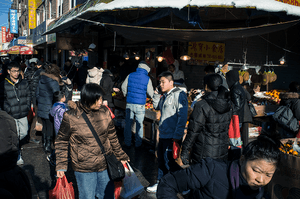
The usage of Chinese by the Chinese diaspora has been determined by a large number of factors, including their ancestry, their migrant ancestors' "regime of origin", assimilation through generational changes, and official policies of their country of residence. The general trend is that more established Chinese populations in the Western world and in many regions of Asia have Cantonese as either the dominant variety or as a common community vernacular, while Mandarin is much more prevalent among new arrivals, making it increasingly common in many Chinatowns.[83][84]
Country statistics
There are over 50 million Chinese diaspora.[1][2][85][3] Most of them are living in Southeast Asia where they make up a majority of the population of Singapore (75%) and significant minority populations in Thailand (14%), Malaysia (23%), Indonesia, Brunei (10%), the Philippines, and Vietnam.
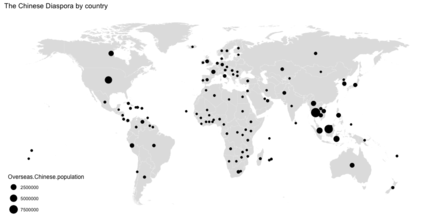
See also
- Han Chinese
- Anti-Chinese legislation in Indonesia
- Bumiputra
- Chinese migration
- Chinatown, the article, and Category:Chinatowns the international category list
- Chinese Clan Association
- Chinese Consolidated Benevolent Association
- Hong Kongers
- List of overseas Chinese
- Overseas Chinese banks
- Overseas Chinese Affairs Office
- Third culture kid
- Taiwanese people
- Overseas Taiwanese
- Kapitan Cina
Further reading
- Barabantseva, Elena. Overseas Chinese, Ethnic Minorities and Nationalism: De-centering China, Oxon/New York: Routledge, 2011.
- Chin, Ung Ho. The Chinese of South East Asia, London: Minority Rights Group, 2000. ISBN 1-897693-28-1
- Fitzgerald, John. Big White Lie: Chinese Australians in White Australia, UNSW Press, Sydney, 2007. ISBN 978-0-86840-870-5
- Gambe, Annabelle R. (2000). Overseas Chinese Entrepreneurship and Capitalist Development in Southeast Asia. Volume 9 of Sudostasien Series (illustrated ed.). LIT Verlag Münster. ISBN 3825843866. Retrieved 24 April 2014.
- Kuhn, Philip A. Chinese Among Others: Emigration in Modern Times, Lanham, MD/Plymouth: Rowman & Littlefield, 2008.
- López-Calvo, Ignacio. Imaging the Chinese in Cuban Literature and Culture, Gainesville, Florida: University Press of Florida, 2008. ISBN 0-8130-3240-7
- Pan, Lynn. The Encyclopedia of the Chinese Overseas, Landmark Books, Singapore, 1998. ISBN 981-4155-90-X
- Reid, Anthony; Alilunas-Rodgers, Kristine, eds. (1996). Sojourners and Settlers: Histories of Southeast China and the Chinese. Contributor Kristine Alilunas-Rodgers (illustrated, reprint ed.). University of Hawaii Press. ISBN 0824824466. Retrieved 24 April 2014.
- Tan, Chee-Beng. Chinese Overseas: Comparative Cultural Issues, Hong Kong University Press, 2004.
Notes
- ^ The Japanese nationals with Chinese ethnicity are excluded.
- ^ This number includes 443,566 people called Joseonjok (조선족). Joseonjok people are the Koreans who have Chinese citizenship. The 181,428 Chinese people who are ethnic Chinese (calculated from 624,994-443,566) in Korea are called Hwagyo (화교). (See reference)
References
- 1 2 張明愛 (2012-03-11). "Reforms urged to attract overseas Chinese". China.org.cn. Retrieved 2012-05-28.
- 1 2 "Hu meets overseas Chinese organizations leaders|Politics". chinadaily.com.cn. 2012-04-09. Retrieved 2012-05-28.
- 1 2 Huiyao Wang (24 May 2012). "China's Competition for Global Talents: Strategy, Policy and Recommendations" (PDF). Asia Pacific. p. 2. Retrieved 28 May 2012.
- 1 2 "Population in Brief 2015" (PDF). Singapore Government. September 2015. Archived from the original (PDF) on 16 February 2016. Retrieved 14 February 2016.
- 1 2 Barbara A. West (2009), Encyclopedia of the Peoples of Asia and Oceania, Facts on File, p. 794, ISBN 1438119135
- 1 2 "Population by States and Ethnic Group". Department of Information, Ministry of Communications and Multimedia, Malaysia. 2015. Archived from the original on 12 February 2016. Retrieved 12 February 2015.
- ↑ "ASIAN ALONE OR IN ANY COMBINATION BY SELECTED GROUPS: 2016". U.S. Census Bureau. Retrieved 15 October 2016.
- 1 2 Kewarganegaraan, Suku Bangsa, Agama dan Bahasa Sehari-hari Penduduk Indonesia Hasil Sensus Penduduk 2010. Badan Pusat Statistik. 2011. ISBN 9789790644175.
- ↑ (Ethnic origins, 2011 counts, for Canada, provinces and territories – 20% sample data)
- ↑ "2016 Immigration Census, 통계연보(글내용) < 통계자료실 < 출입국·외국인정책본부". Immigration.go.kr. 2017-06-21. Retrieved 2017-12-15.
- 1 2 "CIA World Factbook". Cia.gov. Retrieved 2012-05-07.
- ↑ "Burma". State.gov. 2011-08-03. Retrieved 2012-05-07.
- 1 2 "PRIB: Senate declares Chinese New Year as special working holiday". Senate.gov.ph. 2013-01-21. Retrieved 2016-04-14.
- ↑ "2016 Census QuickStats: Australia". www.censusdata.abs.gov.au.
- ↑ Vohar Cheath (2012-02-01). "THE SON OF THE KHMER EMPIRE Be informed that FB Account Sokheoun Pang is Fake Created by CPP Supporter to Defame and Complicate Me. Mine is Khmer Sovannaphumi". Translated from Khmer by Ah Tree Teuk Si Iv. Radio Free Asia. Retrieved 2014-10-05.
- 1 2 "The World Factbook — Central Intelligence Agency". www.cia.gov.
- 1 2 3 General Statistics Office of Vietnam. "Kết quả toàn bộ Tổng điều tra Dân số và Nhà ở Việt Nam năm 2009–Phần I: Biểu Tổng hợp". p. 134/882. Retrieved 2012-12-13.
- 1 2 "平成29年度末在留外国人確定値" (PDF) (in Japanese). Ministry of Justice. 13 April 2018. Archived from the original (PDF) on 27 March 2018. Retrieved 13 April 2018.
- ↑ ""Chinois de France" ne veut rien dire". Slate.fr. Retrieved 18 March 2015.
- ↑ "Check Browser Settings". Neighbourhood.statistics.gov.uk. Retrieved 18 March 2015.
- ↑ "Chinese people are an important population mostly in Venezuela (400,000)..." p. 201 (in Spanish) Archived 24 February 2014 at the Wayback Machine.
- 1 2 Liao, Wenhui; He, Qicai (2015). "Tenth World Conference of Overseas Chinese: Annual International Symposium on Regional Academic Activities Report (translated)". The International Journal of Diasporic Chinese Studies. 7 (2): 85–89.
- ↑ Larin, Victor (2006), "Chinese in the Russian Far East: Regional views", in Akaha, Tsuneo; Vassilieva, Anna, Crossing National Borders: human migration issues in Northeast Asia, New York: United Nations University Press, pp. 47–67, ISBN 92-808-1117-7
- ↑ Zayonchkovskaya, Zhanna (2004), "МИГРАЦИЯ ВЫШЛА ИЗ ТЕНИ. На вопросы Виталия КУРЕННОГО отвечает заведующая лабораторией миграции населения Института народно-хозяйственного прогнозирования РАН Жанна ЗАЙОНЧКОВСКАЯ (Migration has left the shadows. Zhanna Zayonchkovskaya, Director of the Population Migration Laboratory of the National Economy Forecasting Institute of the Russian Academy of Sciences, answers Vitaly Kurrenoy's questions)", Otechestvennye Zapiski, 4 (19), retrieved 2009-01-20
- 1 2 "I cittadini non comunitari regolarmente soggiornanti". 2014.
- 1 2 "Población extranjera por sexo, país de nacionalidad y edad (hasta 85 y más).", Avance del Padrón a 1 de enero de 2009. Datos provisionales, Spain: Instituto Nacional de Estadística, 2009, retrieved 2009-06-13
- 1 2 3 4 Barabantseva, Elena (2012). "Who Are "Overseas Chinese Ethnic Minorities"? China's Search for Transnational Ethnic Unity". Modern China. 31 (1): 78–109. doi:10.1177/0097700411424565.
- ↑ Wang, Gungwu (19 December 1994). Upgrading the migrant: neither huaqiao nor huaren. Chinese America: History and Perspectives 1996: Chinese Historical Society of America. p. 4. ISBN 0-9614198-9-X.
In its own way, it [Chinese government] has upgraded its migrants from a ragbag of malcontents, adventurers, and desperately poor laborers to the status of respectable and valued nationals whose loyalty was greatly appreciated.
- ↑ Archived 17 March 2009 at the Wayback Machine.
- ↑ Blondeau, Anne-Marie; Buffetrille, Katia; Wei Jing (2008). Authenticating Tibet: Answers to China's 100 Questions. University of California Press. p. 127.
- ↑ Xiang, Biao (2003). "Emigration from China: a sending country perspective". International Migration. 41 (3): 21–48. doi:10.1111/1468-2435.00240.
- ↑ Zhao, Heman (2004). 少數民族華僑華人研究 [A Study of Overseas Chinese Ethnic Minorities]. Beijing: 華僑出版社.
- ↑ Li, Anshan (2001). "'華人移民社群的移民身份與少數民族'研討會綜述" [Symposium on the Migrant Statuses of Chinese Migrant Communities and Ethnic Minorities]. 華僑華人歷史研究. 4: 77–78.
- ↑ Shi, Canjin; Yu, Linlin (2010). "少數民族華僑華人對我國構建'和諧邊疆'的影響及對策分析" [Analysis of the Influence of and Strategy Towards Overseas Chinese Ethnic Minorities in the Implementation of "Harmonious Borders"]. 甘肅社會科學. 1: 136–39.
- ↑ Ding, Hong (1999). 東干文化研究 [The study of Dungan culture]. Beijing: 中央民族學院出版社. p. 63.
- ↑ "在資金和財力上支持對海外少數民族僑胞宣傳" [On finances and resources to support information dissemination towards overseas Chinese ethnic minorities]. 人民網. 2011-03-10. Retrieved 2012-12-24.
- ↑ "A study of Southeast Asian youth in Philadelphia: A final report". Oac.cdlib.org. Retrieved 6 February 2017.
- ↑ Pike, John. "Chinese Civil War". Global Security. Retrieved 2012-11-14.
- ↑ "Chiang Kai Shiek". Sarawakiana. Retrieved 28 August 2012.
- ↑ Yong, Ching Fatt. "The Kuomintang Movement in British Malaya, 1912–1949". University of Hawaii Press. Archived from the original on 10 November 2013. Retrieved 29 September 2013.
- ↑ Tan, Kah Kee (2013). "The Making of an Overseas Chinese Legend". World Scientific Publishing Company. doi:10.1142/8692. ISBN 978-981-4447-89-8. Retrieved 29 September 2013.
- ↑ Jan Voon, Cham (2002). "Kuomintang's influence on Sarawak Chinese". Sarawak Chinese political thinking : 1911–1963 (master thesis). University of Malaysia Sarawak (UNIMAS). Retrieved 28 August 2012.
- ↑ Wong, Coleen. "The KMT Soldiers Who Stayed Behind In China". The Diplomat. Retrieved 29 September 2013.
- ↑ The Story of California From the Earliest Days to the Present, by Henry K. Norton. 7th ed. Chicago, A.C. McClurg & Co., 1924. Chapter XXIV, pp. 283–96.
- ↑ French, Howard. "China's Second Continent: How a Million Migrants Are Building a New Empire in Africa". Foreign Affairs.
- ↑ "Deutsch-Chinesisches Kulturnetz". De-cn.net. Retrieved 6 February 2017.
- 1 2 "Heimat süßsauer" (PDF). Eu-china.net. Retrieved 27 May 2018.
- ↑ Bartlett, David (1997). The Political Economy of Dual Transformations: Market Reform and Democratization in Hungary. University of Michigan Press. p. 280.
- ↑ Fukuda, Kazuo John (1998). Japan and China: The Meeting of Asia's Economic Giants. Routledge. ISBN 978-0-7890-0417-8.
- ↑ Murray L Weidenbaum (1 January 1996). The Bamboo Network: How Expatriate Chinese Entrepreneurs are Creating a New Economic Superpower in Asia. Martin Kessler Books, Free Press. pp. 4–5. ISBN 978-0-684-82289-1.
- ↑ "The world's successful diasporas". Worldbusinesslive.com. Archived from the original on 1 April 2008. Retrieved 18 March 2015.
- ↑ "Migration and Remittances: Top Countries" (PDF).
- ↑ John R. Jones Guide to Vietnam 1994. p. 29 "Confucianism. Confucianism entered Vietnam from China during the Bac Thuoc era (111 BC – AD 938) when the country was under the yoke.."
- ↑ Amy Chua, "World on Fire", 2003, Doubleday, pp. 3, 43.
- ↑ Amy Chua, "World on Fire", 2003, Doubleday, p. 61.
- ↑ Malaysia's race rules. The Economist Newspaper Limited (2005-08-25). Requires login.
- ↑ "你懂得_環球網". Web.archive.org. Archived from the original on 15 January 2010. Retrieved 18 March 2015.
- ↑ "海外漢人被屠殺的血淚史大全". Po-qianjun.woku.com. Retrieved 6 February 2017.
- ↑ "十七﹒八世紀海外華人慘案初探". Archived from the original on 2 January 2017. Retrieved 23 June 2017.
- ↑ "東南亞華人遭受的幾次屠殺". Web.ffjh.tyc.edu.tw. Retrieved 18 March 2015.
- ↑ "南洋華人被大規模屠殺不完全記錄 清明回顧篇:南洋理工校花爆性愛短片醜聞事件(圖)". Ido.3mt.com.cn. Retrieved 6 February 2017.
- ↑ Indonesian academics fight burning of books on 1965 coup, smh.com.au
- ↑ Vickers (2005), p. 158
- ↑ "Analysis – Indonesia: Why ethnic Chinese are afraid". BBC News. Retrieved 18 March 2015.
- ↑ Wages of Hatred. Michael Shari. Business Week.
- ↑ "May 13 by Kua Kia Soong". Littlespeck.com. Archived from the original on 14 October 2012. Retrieved 7 May 2012.
- ↑ "Editorial: Racist moves will rebound on Tonga". The New Zealand Herald. 23 November 2001. Retrieved 1 November 2011.
- ↑ Spiller, Penny: "Riots highlight Chinese tensions", BBC News, 21 April 2006
- ↑ Independent Newspapers Online. "Race clouds Malaysian birthday festivities". Independent Online. Archived from the original on 2 September 2010. Retrieved 18 March 2015.
- ↑ The World Today Barbara Miller (2011-06-30). "Chinese Australians want apology for discrimination". Abc.net.au. ABC News (Australian Broadcasting Corporation). Retrieved 2012-05-07.
- ↑ "Nationality Law of the People's Republic of China". china.org.cn. Retrieved 18 March 2015.
- ↑ "Report: Half of China's millionaires want to leave". CNN. 1 November 2011. Archived from the original on 11 July 2012.
- ↑ "Will China's rise shape Malaysian Chinese community?". BBC News. 2011-12-30.
- ↑ "U.S. ambassador nominee stirs strong emotions in China". Statesman.com. 2011-08-24. Retrieved 2012-05-07.
- ↑ Richard D. Lewis (2003). The Cultural Imperative. Books.google.ca. ISBN 9780585434902. Retrieved 2012-05-09.
- ↑ Zhou, Wanfeng (17 December 2008). "China goes on the road to lure "sea turtles" home". Reuters. Retrieved 13 June 2016.
- ↑ "Yearbook of Immigration Statistics: 2012 Supplemental Table 2". U.S. Department of Homeland Security. Retrieved 2013-05-02.
- ↑ "Yearbook of Immigration Statistics: 2011 Supplemental Table 2". U.S. Department of Homeland Security. Retrieved 2013-04-27.
- ↑ "Yearbook of Immigration Statistics: 2010 Supplemental Table 2". U.S. Department of Homeland Security. Retrieved 2013-04-27.
- ↑ John Marzulli (May 9, 2011). "Malaysian man smuggled illegal Chinese immigrants into Brooklyn using Queen Mary 2: authorities". New York: NY Daily News.com. Retrieved 2013-04-27.
- ↑ "Chinese New Year 2012 in Flushing". QueensBuzz.com. January 25, 2012. Retrieved May 2, 2013.
- ↑ "Selected Population Profile in the United States 2015 American Community Survey 1-Year Estimates New York-Newark, NY-NJ-CT-PA CSA Chinese alone". United States Census Bureau. Retrieved April 2, 2017.
- ↑ West (2010), pp. 289–90
- ↑ Pierson, David (2006-03-31). "Dragon Roars in San Gabriel". Los Angeles Times.
- ↑ "President meets leaders of overseas Chinese organizations". English.gov.cn. 9 April 2012. Archived from the original on 28 May 2012. Retrieved 28 May 2012.
- ↑ Tremann, Cornelia (December 2013). "Temporary Chinese Migration to Madagascar: Local Perceptions, Economic Impacts, and Human Capital Flows" (PDF). African Review of Economics and Finance. 5 (1). Archived from the original (PDF) on 10 August 2014. Retrieved 21 April 2015.
- ↑ Cook, Seth; Lu, Jixia; Tugendhat, Henry; Alemu, Dawit (May 2016). "Chinese Migrants in Africa: Facts and Fictions from the Agri-Food Sector in Ethiopia and Ghana". World Development. 81: 61–70. doi:10.1016/j.worlddev.2015.11.011.
- ↑ "China empowers a million Ethiopians: ambassador". Africa News Agency. 26 January 2016.
- ↑ "Chinese Businesses Quit Angola After `Disastrous' Currency Blow". Bloomberg. 20 April 2017.
- ↑ "China-Nigeria's trade volume declining very fast –Chinese Ambassador". The Sun. February 20, 2017.
- ↑ Background Note: Mauritius, Washington, DC: U.S. Department of State, 2010, retrieved 2012-03-24
- ↑ Chinese, Algerians fight in Algiers – witnesses. Reuters. 4 August 2009.
- ↑ Tagy, Mwakawago (14 January 2013). "Dar-Beijing for improved diplomatic-ties". Daily News. Dar es Salaam. Archived from the original on 14 May 2013. Retrieved 22 July 2015.
- ↑ Chinese Language Educational Foundation 1999
- ↑ "Drivers of change or cut-throat competitors? Challenging Cultures of Innovation of Chinese and Nigerian migrant entrepreneurs in West Africa," p. 10
- ↑ "Zambia has 13,000 Chinese". Zambia Daily Mail News. 21 March 2015.
- ↑ Horta, Loro. "China, Mozambique: old friends, new business". International Relations and Security Network.
- ↑ Lo, Kinling (November 17, 2017). "How Chinese living in Zimbabwe reacted to Mugabe's downfall: 'it's the most hopeful moment in 20 years'". South China Morning Post.
- 1 2 3 4 5 6 Sautman, Barry; Yan Hairong (December 2007). "Friends and Interests: China's Distinctive Links with Africa" (PDF). African Studies Review. 50 (3): 89. doi:10.1353/arw.2008.0014. Archived from the original (PDF) on 6 June 2014.
- ↑ Situma, Evelyn (2013-11-07). "Kenya savours, rues China moment". Business Daily.
- ↑ Jaramogi, Pattrick (2013-02-18), Uganda: Chinese Investments in Uganda Now At Sh1.5 Trillion, retrieved 2013-02-20
- ↑ "'The Oriental Post': the new China–Africa weekly", France 24, 2009-07-10, retrieved 2009-08-26
- ↑ "Chinese Engagement In Lesotho And Potential Areas For Cooperation". Wikileaks.
- ↑ "Somalis in Soweto and Nairobi, Chinese in Congo and Zambia, local anger in Africa targets foreigners". Mail & Guardian. 25 January 2015.
- 1 2 3 4 5 Aurégan, Xavier (February 2012). "Les "communautés" chinoises en Côte d'Ivoire". Instit Francais de Geopolitique.
- ↑ Update on Chinese activities in Namibia, WikiLeaks.org, 2009-04-09
- ↑ "China–Mali relationship: Finding mutual benefit between unequal partners" (PDF). Centre for Chinese Studies Policy Briefing. January 2014. Archived from the original (PDF) on 26 June 2014. Retrieved 18 December 2014.
- ↑ "China in Cape Verde: the Dragon's African Paradise". Online Africa Policy Forum. 2 January 2008.
- ↑ "Chinese in Rwanda". Public Radio International. 17 October 2011.
- ↑ "Chinese traders shake up Moroccan vendors". AFP. 24 September 2004.
- ↑ "1999 年底非洲國家和地區華僑、華人人口數 (1999 year-end statistics on Chinese expatriate and overseas Chinese population numbers in African countries and territories)". Chinese Language Educational Foundation.
- ↑ "508 Chinese evacuated from Libya". Xinhua. 2 August 2014.
- ↑ "한국 사는 외국인, 절반이 `王서방` – 중앙일보 뉴스". Article.joinsmsn.com. 23 June 2011. Archived from the original on 18 June 2013. Retrieved 7 May 2012.
- ↑ 馬敏/Ma Min (1 April 2009), "新疆《哈薩克斯坦華僑報》通過哈方註冊 4月底創刊/Xinjiang 'Kazakhstan Overseas Chinese Newspaper' Passes Kazakhstan Registration; To Begin Publishing at Month's end", Xinhua News, archived from the original on 20 July 2011, retrieved 17 April 2009
- 1 2 "The World Factbook". Cia.gov. Retrieved 18 March 2015.
- ↑ "Chinese expats in Dubai". TimeOutDubai.com. Retrieved 18 March 2015.
- ↑ "Chinese influence outpaces influx". Dawn. 22 January 2018. Retrieved 18 February 2018.
- ↑ "Economic Planning And Development, Prime Minister's Office". Prime Minister's Office, Brunei Darussalam. 2015. Retrieved 2017-06-18.
- ↑ "Appeal to international organisations – Stop the China-Israel migrant worker scam!" (Press release). Kav La'Oved. 2001-12-21. Retrieved 2006-09-03.
- ↑ Joseph Puder (5 September 2012). "The Growing Chinese-Israeli Relationship". Front Page Mag. Archived from the original on 23 January 2013. Retrieved 19 September 2012.
- ↑ "Chinese in N. Korea 'Face Repression'". Chosun Ilbo. 2009-10-10. Retrieved 2009-10-15.
- ↑ "Qatar´s population by nationality". bq magazine. 12 July 2014. Archived from the original on 22 December 2013. Retrieved 21 December 2014.
- ↑ "India's fading Chinese community faces painful war past". AFP. 2 November 2014.
- ↑ "Chinese population statistics – Countries compared". NationMaster. Retrieved 2012-05-07.
- ↑ Population and Housing Census 2009. Book 2. Part 1. (in tables). Population of Kyrgyzstan. (Перепись населения и жилищного фонда Кыргызской Республики 2009. Книга 2. Часть 1. (в таблицах). Население Кыргызстана) (PDF), Bishkek: National Committee on Statistics, 2010, archived from the original (PDF) on 30 May 2011
- ↑ Zayonchkovskaya 2004
- ↑ Larin 2008
- ↑ ""Chinois de France" ne veut rien dire". Slate.fr. 2010-06-28. Retrieved 2012-05-07.
- ↑ "BiB - Bundesinstitut für Bevölkerungsforschung - Pressemitteilungen - Archiv 2017 - Zuwanderung aus außereuropäischen Ländern fast verdoppelt". www.bib-demografie.de. Archived from the original on 9 December 2017. Retrieved 12 December 2017.
- ↑ CBS 2012
- ↑ "Utrikes födda efter födelseland – Hong Kong + China + Taiwan". SCB Statistikdatabasen. Retrieved 15 April 2018.
- ↑ "Foreign population with legal status of residence (No.) by Place of residence (NUTS-2002) and Nationality". Population. Instituto Nacional de Estatística. 2007. Retrieved 2009-03-18.
- ↑ "Statistics Yearbook of Ireland 2012" (PDF). Cso.ie.
- ↑ "Survey" (PDF). fulbright.hu.
- ↑ "Bijdrage BelgiË voor het OESO migratierapport"" (PDF). Non-profit data Belgium (in Dutch).
- ↑ "Innvandrarbefolkninga og personar med annan innvandringsbakgrunn, etter innvandringskategori, kjønn og landbakgrunn. 1 January 2001". Statistics Norway (in Norwegian).
- ↑ Statistics Denmark 2009
- ↑ Кръстева, Анна (2005). "Китайците". Имиграцията в България (PDF). София: IMIR. pp. 80–104. ISBN 954-8872-56-0. Archived from the original (PDF) on 19 December 2008.
- ↑ Tilastokeskus "Archived copy". Archived from the original on 23 May 2012. Retrieved 27 March 2012. .
- ↑ Czech Statistical Office 2007
- ↑ Vasiliu, Adrian O.; Vasileanu, Marius; Duţă, Mihai; Covaci, Talida (1 August 2005). "Chinezii din Romania – polul est-european al civilizatiei asiatice/Chinese in Romania – Eastern European pole of Asian civilisation". Adevărul. Archived from the original on 24 October 2008. Retrieved 7 April 2009.
- ↑ "Попис становништва, домаћинстава и станова 2011. у Републици Србији: Становништво према националној припадности – "Остали" етничке заједнице са мање од 2000 припадника и двојако изјашњени" (PDF). Webrzs.stat.gov.rs.
- ↑ "Frontpage – Hagstofa". Statice.is. Retrieved 6 February 2017.
- ↑ Statistikaamet (31 December 2011). Population by Ethnic Nationality, Sex and Place of Residence. Statistikaamet. Retrieved 2017-06-18.
- ↑ "2015 American Community Survey 1-Year Estimates". U.S. Census Bureau. Retrieved 6 July 2017.
- ↑ " Ethnic Origin (247), Single and Multiple Ethnic Origin Responses (3) and Sex (3) for the Population of Canada, Provinces, Territories, Census Metropolitan Areas and Census Agglomerations, 2006 Census – 20% Sample Data,"
- ↑ "La diáspora china en Venezuela acelera su relevo generacional – Internacional". Eluniversal.com. Retrieved 6 February 2017.
- ↑ President Chen's State Visit to Panama, Government Information Office, Republic of China, October 2003, archived from the original on 4 December 2008, retrieved 7 November 2007
- ↑ Hua, Vanessa (2002-06-23), "Playing the Panama card – The China-Taiwan connection", The San Francisco Chronicle, retrieved 2007-11-07
- ↑ "Argentina-China Relations". Americas Quarterly. Retrieved 18 March 2015.
- ↑ "Chinese Argentines and the Pace of Cultural Integration". Retrieved 18 March 2015.
- ↑ Clarín: As of 2010. Chinese community becomes the fourth largest group of immigrants in Argentina (in Spanish)
- ↑ CIA World Factbook. Cuba. 15 May 2008. <https://www.cia.gov/library/publications/the-world-factbook/geos/cu.html>.
- ↑ Joshua Project. "Han Chinese, Hakka in Jamaica". Joshuaproject.net. Retrieved 18 March 2015.
- ↑ By Rachel Will Date Published: 10/21/2011
- ↑ "Censusstatistieken 2012" (PDF). Algemeen Bureau voor de Statistiek in Suriname (General Statistics Bureau of Suriname). p. 76.
- ↑ "Presencia de chinos en Colombia se ha duplicado en ocho años". UNIMEDIOS. Retrieved 11 February 2016.
- ↑ "The Chinese Community and Santo Domingo's Barrio Chino". Retrieved 18 March 2015.
- ↑ "Nicaragua: People groups". Joshua Project. Retrieved 2007-03-26.
- ↑ "Chinese in Guyana: Their Roots". Rootsweb.ancestry.com. Retrieved 18 March 2015.
- ↑ "Redatam: CEPAL/CELADE". Celade.cepal.org. Archived from the original on 28 June 2012. Retrieved 7 May 2012.
- ↑ Statistics, c=AU; o=Commonwealth of Australia; ou=Australian Bureau of. "Main Features - Cultural Diversity Article". www.abs.gov.au.
- ↑ "Statistics". censusdata.abs.gov.au.
- ↑ "2013 Census QuickStats about culture and identity". Stats.govt.nz. Archived from the original on 24 July 2017. Retrieved 27 May 2018.
- ↑ Fiji, CIA World Factbook, retrieved 23 March 2012
- ↑ Nelson 2007, p. 8
- ↑ Chin 2008, p. 118
- ↑ "Tonga announces the expulsion of hundreds of Chinese immigrants", John Braddock, wsws.org, 18 December 2001
- ↑ Paul Raffaele and Mathew Dearnaley (22 November 2001). "Tonga to expel race-hate victims". The New Zealand Herald. Retrieved 1 November 2011.
- ↑ Palau, CIA World Factbook, retrieved 23 March 2012
External links
| Wikimedia Commons has media related to Chinese diaspora. |
- Andrewkidz Collections Library – The Overseas Chinese Biographies
- Overseas Chinese Affairs Office of the State Council of the People's Republic of China (in Chinese)
- Overseas Chinese Affairs Commission, R.O.C.
- Ohio University Study on Distribution of the Overseas Chinese Population
- The Distribution of the Overseas Chinese in the Contemporary World
- Museum of Chinese in the Americas
- The Overseas Chinese returnees movement (in Chinese)
- Chinese in Africa